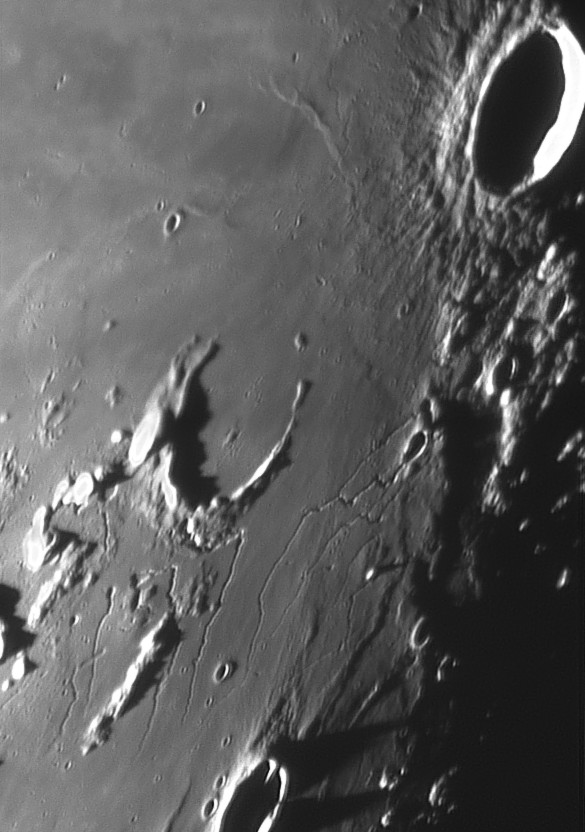
image by Bruno Daversin
About 170 years ago the magisterial book by Beer and Madler marshaled compelling evidence that the Moon was airless and waterless. But for nearly another hundred years various observers harbored hope that a tenuous atmosphere existed, perhaps on the far side, and if so some features of the Moon might have been related to flowing water. The most extreme view (still promoted by a handful in the early 1960s) was that the maria were dried up ocean beds, and at least one person proposed that craters were coral reefs. With suggestions like these it was easy to interpret sinuous rilles as actual river valleys. A prime example, mentioned by Harvard Observatory scientist William Pickering in the early 20th century, was the family of sinuous rilles near the ruined crater Prinz. These rilles are typically difficult to observe and image, but the facts that they appear to flow downhill and even have tributaries, gives a basis for the river interpretation. But river water is not the only material that flows in channels. Although it wasn’t really appreciated until the 1960s, lavas also flow in channels, have sinuous traces, and merge as tributaries. The lava channel interpretation is now considered correct and similar channels have been discovered in the lava plains of Mars and Venus. Oh, have I said that these new images by Bruno are the best telescopic views I’ve ever seen of these Prinz rilles? And notice the delicate rille just east of Aristarchus - I’m not sure I’ve ever noticed that before - have you?
Technical Details:
Feb 9, 2006. Ludiver Observatory 600 mm (24″) Schmidt-Cassegrain + webcam + IR filter.
Related Links:
Rükl charts: I don’t have my Rukl with me in Texas so don’t know the chart numbers!
Ludiver’s Moon photos
SUPPORT LPOD - VISIT A SPONSOR (CLICK AN AD BELOW)!
COMMENTS?
Register, and click on the Discussion tab at the top of the page.



